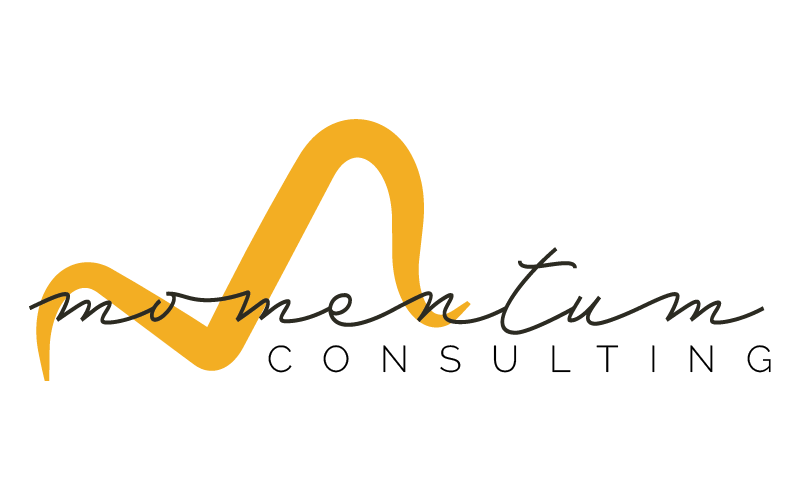Written By Danielle Fauteaux
Writing proposals for marketing work can be a challenge, especially when you do not have productized services or “packages,” but rather build out custom scopes of work. When your proposals take hours upon hours to develop, you should re-evaluate your process and proposal structure.
The Golden Rule of Proposal Writing:
Focus on the Prospect’s Objectives (not on Your Deliverables)
The temptation may be strong to outline every little action you will take and detail your entire process in the proposals you send out. For most, adding that amount of depth winds up being less for the benefit of the prospect and more to protect the salesperson. We can tell ourselves all day long that the details are to provide further assurance and a sense of decreased risk to your prospect, but does it really achieve what we purport? Or are we just overcomplicating it to make ourselves feel better?
Resist the temptation to overcomplicate your proposal. You can provide your process and approach in marketing collateral instead. Then save the ultra-specific details for your implementation team to manage.
A client delivery team trained properly to align client expectations and deliver outcomes over activities is better equipped to delight client and lead the engagement, rather than become order takers. This fosters an atmosphere of trust and autonomy within your organization and allows you to set the expectation that in order for the client-agency relationship to thrive, mutual trust must be exchanged. A prospect that forfeits a bit of control by not necessarily having all the details right up front is more likely to be a client who will trust and respect your work and recommendations over the duration of the relationship.
Silver Rules of Proposal Writing:
- Never just send the document, whether that be the proposal or contract. Record a video walking through the contents and depending on the kind of sale, schedule a call to review the contents as well. This gives your prospect the ability to digest and review the document, but also leaves the door open for changes and revisions as necessary to achieve amiable ground before signing the contract.
- Don’t lose focus. Above all else, keep the attention on the prospect’s goals and desired future state. (This means you can leave the 50 slide presentation behind as well).
- Don’t perform any strategy, design, or planning work until after the contract is signed. Same thing with large scale performance diagnostics. This boundary is important for establishing a respectful dynamic in your working relationship.
I repeat, strategy and delivery planning happens after the contract is signed, not before.
So, if that’s what you shouldn’t do, what should you do when writing sales proposals for marketing and creative work?
Guiding Principles of Proposal Writing:
- Proposals should contain at least two options, but not more than three.
- Proposals should be spoken about and agreed to verbally before they are written down.
- Your written proposal is your “Pre-Contract,” such that it could even be signed as the contract. (You can give them the option to select which option they prefer, sign and set a start date all at once).
- If you list 2-3 productized services options on your website with pricing, this content acts as your proposal. Anything sent by sales should be considered a contract with the option to sign or not to sign.
Some agencies opt to only send contracts, not proposals. That’s fine too; it works better for some. Whether you only send contracts or you send both proposals and contracts, consider the following guidelines:
Guiding Principles of Contract Writing:
- Contracts should be the bridge between the proposal and the start of the engagement.
- Your contracts should be a maximum of 2-3 pages (not including terms and conditions).
- Contracts should be digestible to the prospect in under 5 minutes.
- If following a written proposal, the contract should include the final proposed option agreed upon by both parties during a review of the proposal and omit the other options.
- Leave the contract flexible enough for implementing client delight items but tight enough to give your delivery team boundaries to refer to when clients request out of scope work.
- If you anticipate the engagement to be a multi-year engagement with no junctures to adjust the scope of work and rate, consider adding an inflation price escalation clause. I’ve serviced other agency’s clients whose most recent contract was signed 8 years prior and the cost of goods and labor to complete the work made it nearly impossible to turn a profit on the account. Alternatively, write in junctures at which either party can reassess the value exchange.
What can you do if your contracts are really detailed and long?
Your services are complex, wholistic, and implemented via a unique process. I hear you. That’s why I recommend crafting that content into an informational guide that stands alongside, but separate, to the proposal and contract. This works especially well when you offer productized services or semi-custom services built off of a marketing methodology like Inbound or StoryBrand.
Basically you’re separating everything about YOU from everything about achieving results for your (soon to be) CLIENT.
This separation does a couple of things:
- It keeps you focused on solving for the prospect’s objective(s), rather than defining a cumbersome checklist of highly specific deliverables your agency will implement. Objective focused contracts are better for building trust to carry into a positive working relationship. (This is also a good litmus test to weed out the micro-managing prospects before causing undue stress on your client delivery teams.)
- Once in the midst of the engagement, this separation also gives your delivery team the autonomy to pivot and make minor changes as they see fit to deliver even better results for the client. They are not stuck completing a list of tasks that no longer make sense simply because your agency became legally bound to complete them.
- Decision makers can pick their own adventure. Prospects who care about the details can read them in the separate resource while those who just need the high level overview can get through the short contract without getting bogged down by the details.
Especially if your scope of work and general approach is similar for each engagement, you can shift the sales conversation further up in the buyer’s journey by creating a gated marketing resource that serves to define the generalized specifics even before a one-to-one sales conversation starts. This will aid your sales team by shortening their sales cycle, by giving them the power to sell the unique value proposition, not the activities, and by giving more research power to your prospect.
Everyone wins.
Building a successful marketing agency takes grit, a focus on your value, and sometimes a *loving* kick in the pants.
Needing an ally as you achieve your long-term goals?
I’d be happy to help.

